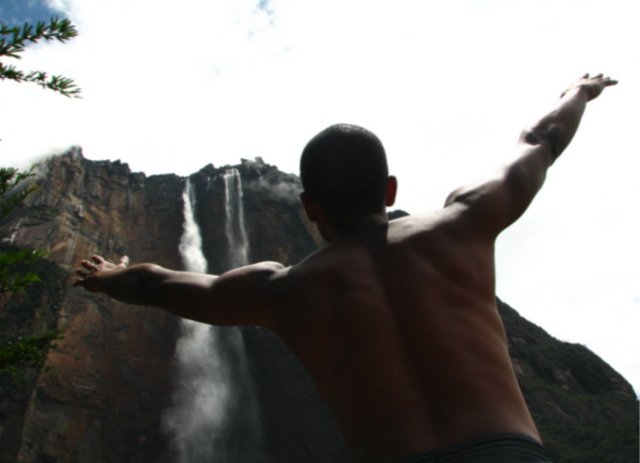
Al sur de de Venezuela, en el estado Bolívar podemos encontrar una de las maravillas naturales del planeta; el salto El Ángel “Kerepakupai Vená”, considerado el más alto existente en el mundo y paradójicamente una de las zonas más vulnerables y comprometidas ecológicamente hablando en nuestro país.
In the south of Venezuela, in the state of Bolivar, we can find one of the natural wonders of the planet; the Angel Falls "Kerepakupai Vená", considered the highest in the world and paradoxically one of the most vulnerable and ecologically compromised areas in our country.

El salto se encuentra en el parque nacional Canaima, específicamente en la peculiar montaña con meseta “tepuy” llamado Auyantepuy, en el macizo guayanés, sobre una extensa selva amazónica, habitad de la etnia indígena Pemón venezolana, que según fuentes literarias llamaron a la zona “Espíritu”. Canaima es un territorio que comprende formaciones tepuyanas de rocas areniscas cuarcitas, donde se pueden encontrar un sin número de especies de flora y fauna endémicas.
The waterfall is located in the Canaima National Park, specifically in the peculiar mountain with a "tepuy" plateau called Auyantepuy, in the Guiana massif, over an extensive Amazon jungle, inhabited by the Venezuelan Pemón indigenous people, who according to literary sources called the area "Espíritu" (Spirit). Canaima is a territory that includes tepuyan formations of quartzite sandstone rocks, where you can find a number of endemic species of flora and fauna.
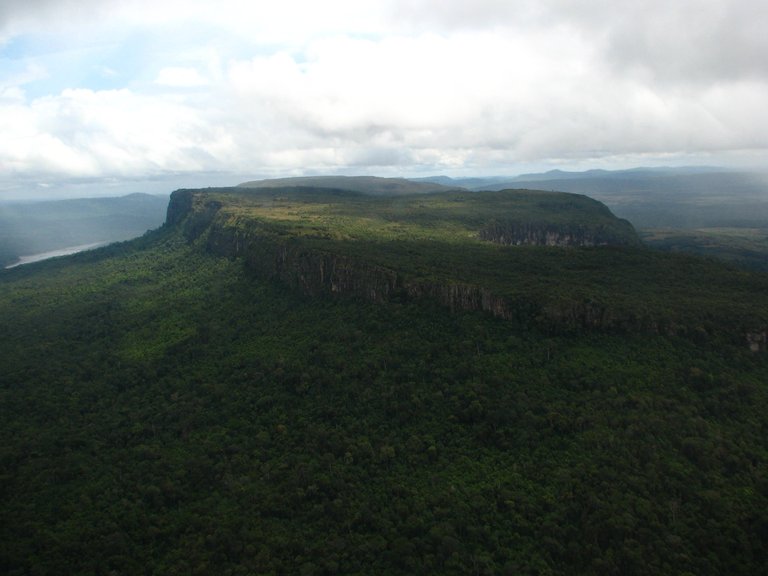
También podemos encontrar ecosistemas de llanuras aluviales, sabanas y bosques bajos donde coexisten la mayor biodiversidad del estado, resaltando los morichales como proveedor de alimento para aves y mamíferos asociados este tipo de lugares.
We can also find alluvial plains, savannahs and low forests ecosystems where the greatest biodiversity of the state coexists, highlighting the morichals as a food provider for birds and mammals associated with this type of places.
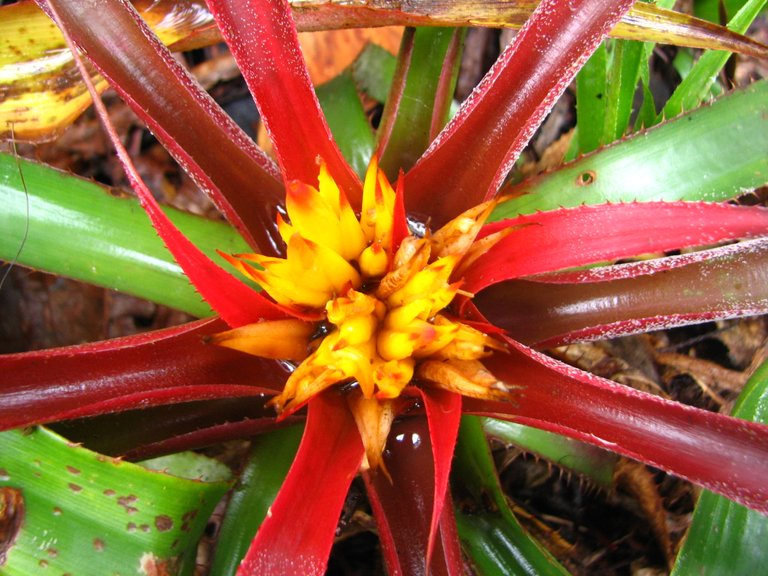
Los Pemones siempre han vivido en la zona desde tiempos remotos, sin embargo sus patrones de asentamiento han sido afectados desde hace más de cien años cuando ingresaron a la zona misioneros adventistas y católicos. Sin embargo, se conservan ciertos patrones comunes. Las comunidades suelen encontrarse en espacios de sabana, generalmente en puntos del terreno más elevados que los que lo rodean, próximas a bosques, donde se encuentran los conucos y cursos grandes o medianos de agua, aunque toman el agua de ríos y quebradas más pequeños.
The Pemons have always lived in the area since ancient times, however their settlement patterns have been affected for over a hundred years when Adventist and Catholic missionaries entered the area. However, certain common patterns remain. The communities are usually found in savannah areas, generally at higher elevations than the surrounding areas, near forests, where conucos and large or medium water courses are found, although they take water from smaller rivers and streams.
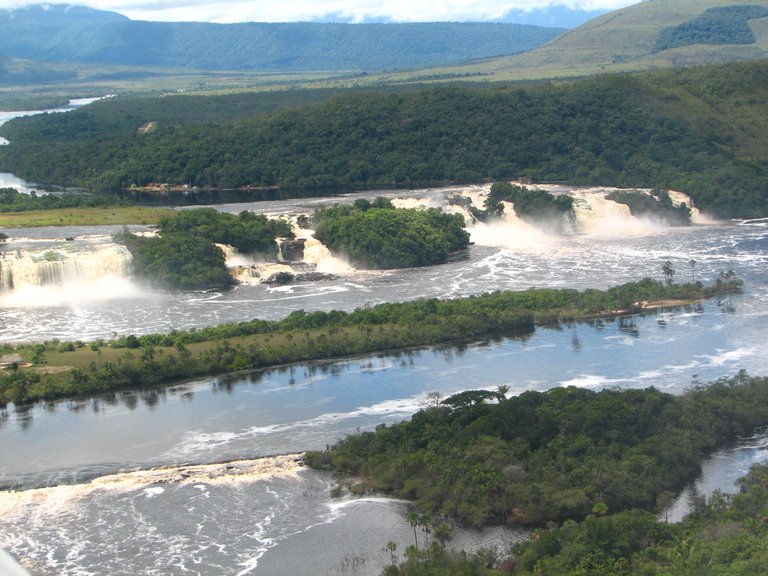
En la actualidad el parque nacional Canaima tiene un equilibrio precario ya que es amenazado por diferentes actividades humanas occidentales que poco a poco mellan los recursos y causan daños importantes a la zona, como la ausencia de planes de sitio, carencia de políticas para manejar armónicamente el crecimiento poblacional, ausencia de planes de manejo, tala, recolección de recursos, cacería de subsistencia, ganadería, agricultura, la extracción de especies con fines comerciales y la pesca.
At present, Canaima National Park has a precarious balance because it is threatened by different western human activities that gradually deplete the resources and cause significant damage to the area, such as the absence of site plans, lack of policies to harmoniously manage population growth, lack of management plans, logging, resource collection, subsistence hunting, cattle ranching, agriculture, the extraction of species for commercial purposes and fishing.

El turismo es de suma importancia para Canaima, pero trae consigo un sin número de problemas no resueltos como el pisoteo sobre ambientes frágiles, ausencia de actividades económicas rentables y alternas, aumento y concentración de la población, comercialización de productos tradicionales, vialidad, acceso a servicios básicos, descargas a los sistemas acuáticos, y falta de sistemas de tratamiento para las aguas cloacales originando la contaminación de las aguas.
Tourism is extremely important for Canaima, but it brings with it a number of unresolved problems such as the trampling on fragile environments, the absence of profitable and alternative economic activities, the increase and concentration of the population, the commercialization of traditional products, roads, access to basic services, discharges into aquatic systems, and the lack of treatment systems for sewage causing water pollution.
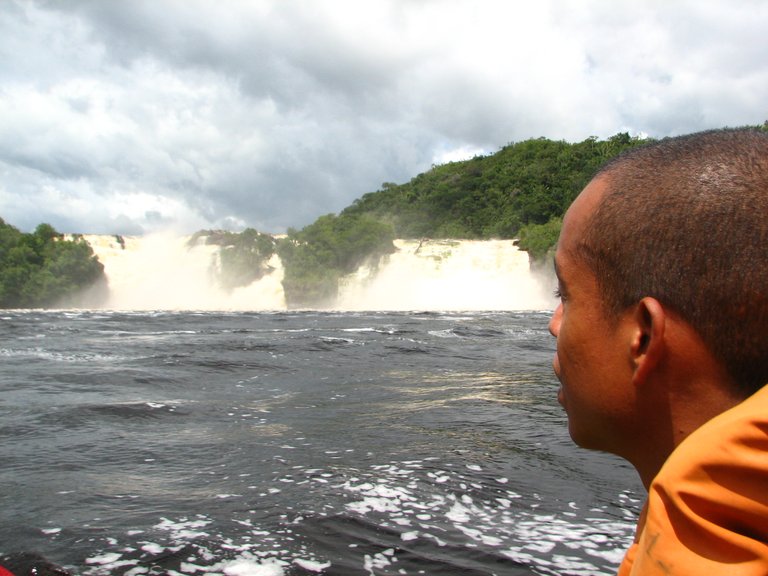
A todo esto se le suma uno de los males más graves del siglo: La minería. Recordemos que en el año 2017, el gobierno venezolano comenzó la extracción de oro, coltán, bauxita y diamantes en el llamado “Arco Minero”. Entiendo que el mismo tiene una importancia económica y soberana para el país y sobre todo en épocas de sanciones unilaterales del gobierno de Estados Unidos a Venezuela, pero debemos afrontar el hecho de que se están devastando zonas vulnerables ecológicas y culturales. Sin hablar de las minas ilegales en el sur del país que suponen un delito en sí mismas y que además traen consigo flagelos sociales importantes como: hacinamiento, redes de trata de mujeres y niños, drogas y otros tantos que se salen de las manos, por lo que debemos crear conciencia antes de que sea demasiado tarde para el equilibrio del ecosistema y sus habitantes originarios, buscando métodos realmente sustentables en el tiempo.
Added to all this is one of the most serious ills of the century: mining. Let's remember that in 2017, the Venezuelan government began the extraction of gold, coltan, bauxite and diamonds in the so-called "Arco Minero". I understand that it has an economic and sovereign importance for the country and especially in times of unilateral sanctions by the U.S. government to Venezuela, but we must face the fact that vulnerable ecological and cultural areas are being devastated. Not to mention the illegal mines in the south of the country, which are a crime in themselves and also bring with them important social scourges such as: overcrowding, networks of trafficking in women and children, drugs and many others that get out of hand, so we must raise awareness before it is too late for the balance of the ecosystem and its original inhabitants, seeking methods that are truly sustainable over time.

Photo by Richard Kenway
Nelson Ojeda
Congratulations @nelsonojeda.vzla! You have completed the following achievement on the Hive blockchain and have been rewarded with new badge(s) :
You can view your badges on your board And compare to others on the Ranking
If you no longer want to receive notifications, reply to this comment with the word
STOPDo not miss the last post from @hivebuzz:
Support the HiveBuzz project. Vote for our proposal!